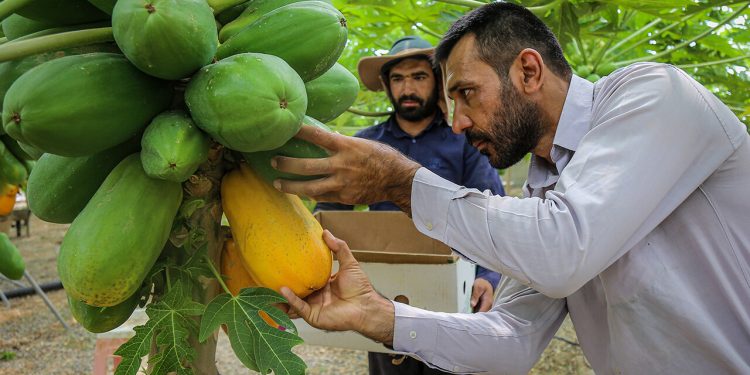#Papaya #GreenhouseFarming #TropicalFruit #AgriculturalInnovation #NortheastIran #NorthKhorasan #ControlledEnvironment #Hydroponics #FarmingTechniques #AgriculturalResilience
The greenhouse in North Khorasan province has been thriving, offering valuable insights into the viability of papaya cultivation in non-tropical climates. Although papaya is native to warm and humid regions, innovative agricultural techniques and advances in greenhouse technology have enabled the successful growth of this fruit in more temperate zones.
Data indicates that the greenhouse’s controlled environment provides ideal conditions for papaya plants to flourish. By adjusting temperature, humidity, and light, farmers are mimicking tropical conditions to suit the papaya’s growth requirements. Additionally, the adoption of hydroponic systems has further optimized resource utilization, leading to higher yields and healthier crops.
The economic significance of this venture cannot be underestimated. As the global demand for tropical fruits increases, exploring alternative regions for cultivation becomes imperative. By expanding papaya production to non-traditional areas like Northeast Iran, we not only meet consumer demands but also strengthen local economies and enhance food security.
Papaya greenhouse farming in Northeast Iran’s North Khorasan province showcases the power of agricultural innovation and technology. The success of this venture highlights how with determination, expertise, and modern farming practices, it’s possible to cultivate high-value tropical fruits in regions far from their natural habitat. As farmers, agronomists, agricultural engineers, farm owners, and scientists continue to collaborate and push the boundaries of traditional farming, we can look forward to a more diversified and resilient agricultural landscape, ensuring a steady supply of delicious tropical delights like papaya, regardless of geographic constraints.










